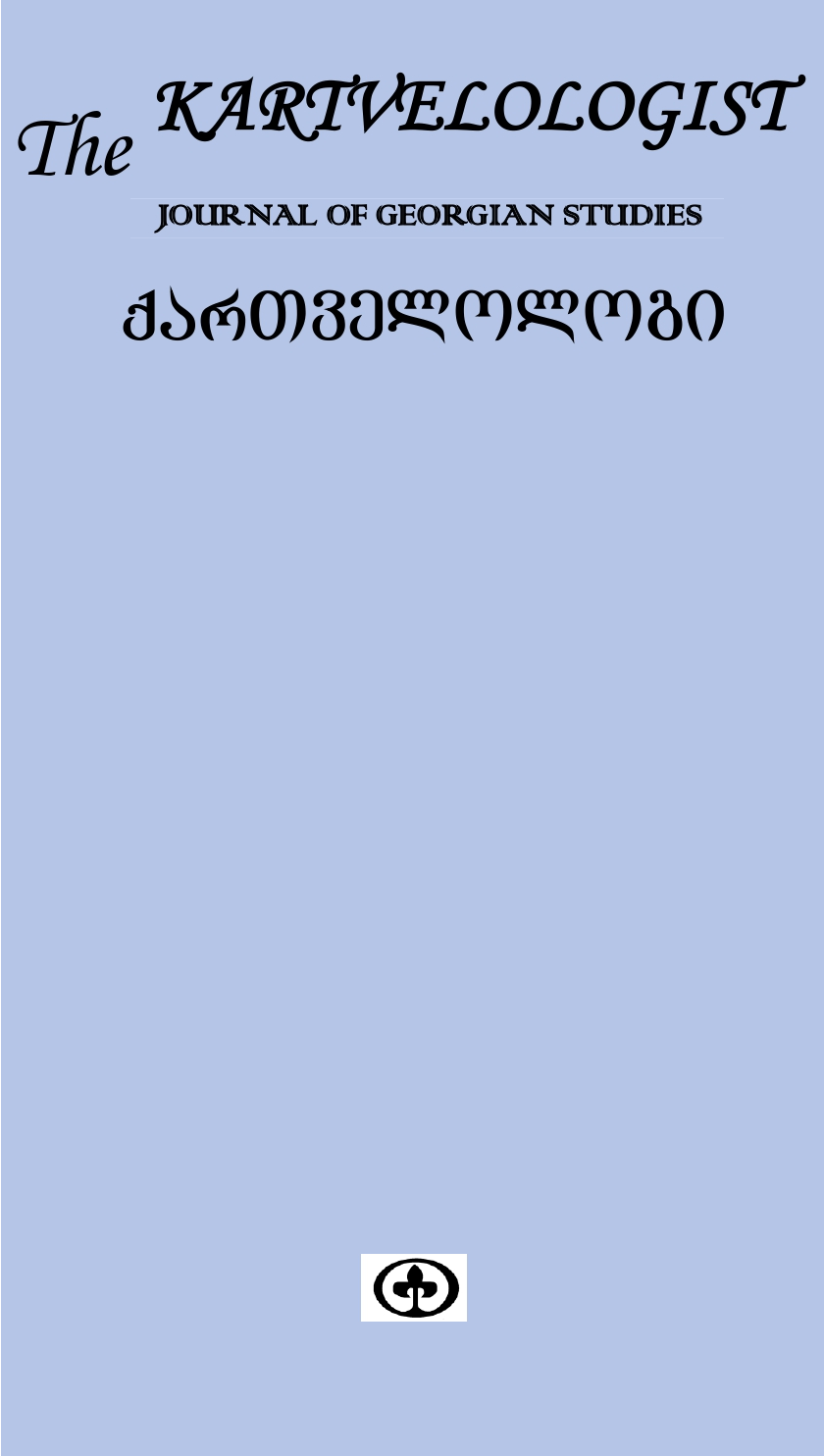Genre Composition and Paradigmatic System of Georgian Hagiography
Keywords:
Georgian Hagiography, Genre of Hagiography, Paradigmatic System of HagiographyAbstract
Georgian literature has developed a canturies-old tradition and was preceded by folklore, mythical thinking and worldview. By the
time the first Georgian literary works were created, the Georgian language was a well-established written language, which fully reflected artistic characters, literary archetypes and models.
The formation of the Georgian literary language is directly related to the development of Georgian literature. The fact that the monuments
of the ancient Georgian literature already reveal the structural properties of linguistic and literary norms indicates that the Georgian literary language was formed in ancient times.
The first texts of Georgian literature are complete literary works with specific structures, peculiarities of reflection, models and paradigms that respect and reflect the basic principles of the hagiographic genre. When studying the hagiographic model, it should also be noted that, in hagiography, both the models and the language of a writer are standardized and normed, as both the plot development and the language expression are fully established. The storyline of the piece of writing develops in it with specific formulations and linguistic clichés that have become stereotypes, and the leading character’s type is also outlined. The standardized language of hagiography reflects hagiographic models, although the language of artistic or poetic expression is completely individual and free, including the hagiographic works.
When discussing the model of Georgian hagiographic writing, two definitions were mainly utilized - “Martyrdom” or “Tsamebani” (Martyrdom) and “Life of Saints” or “Tskhovrebani” (Lives). It is also important to consider related ethnic, religious and gender issues. First of all, it should be noted that the leading characters of “Tskhovrebani” and “Tsamebani” are both ethnic Georgians and foreigners. For example, the Georgians are Hilarion the Georgian, Grigol of Khandzta, Ioane and Ekvtime Mtatsmindeli, Giorgi Mtatsmindeli and others. Among foreigners, Saint Nino, Eustathius of Mtskheta, the Thirteen Assyrian Fathers, Abo of Tiflis and others can be cited.
In the case of a gender-based grouping in the Georgian hagiography, both the “Tskhovrebani” (Lives) and “Tsamebani” (Martyrdom) genres describe the life and martyrdom of male and female saints and martyrs. At the same time, according to gender and ethnic groups, we can talk about both the “Tskhovrebani” (Lives) and “Tsamebani” (Martyrdom) as genres of Georgian hagiography.
In the martyrdom genre, we can discuss the ethnic origin of the hero, as well as the confessional issues, in particular, Christians from the very birth and other heroes recently converted to Christianity. Georgian hagiography can be grouped taking into account both genre and thematic paradigms, such as “Tskhovrebani” (Lives) and “Tsamebani” (Martyrdom), and according to ethnic, religious confessional and gender aspects. The genre and thematic composition of hagiographic works reflect both general, hagiographic and specific, national themes and motives. The observation regarding the Georgian hagiography reveals that standing at the beginning of the works of Georgian literature that have reached us, it reflects the peculiarities of the folklore and mythical worldview and the development and standardization of linguistic norms. On the other hand, Georgian hagiography depicts the relationships with Eastern or Byzantine early Christian literature, and general Christian and national models of the hagiographic paradigmatic system. Among them are the peculiarities of the reflection of the foreigners’ proselytism, which create a national peculiarity in the existing model of hagiography and are based on the socio-political situation.


